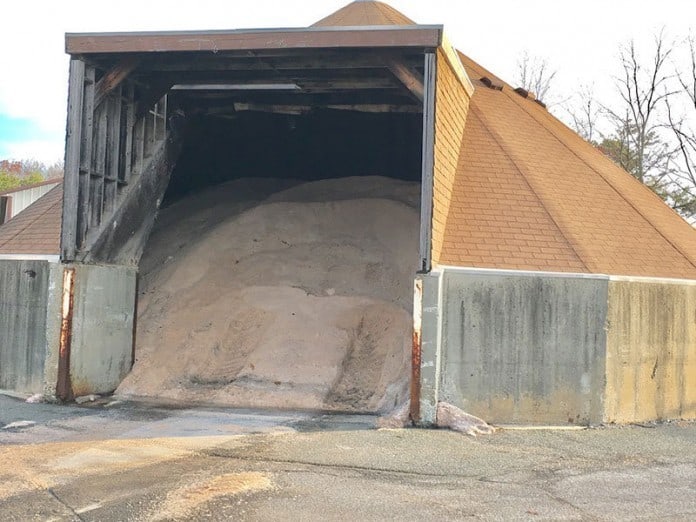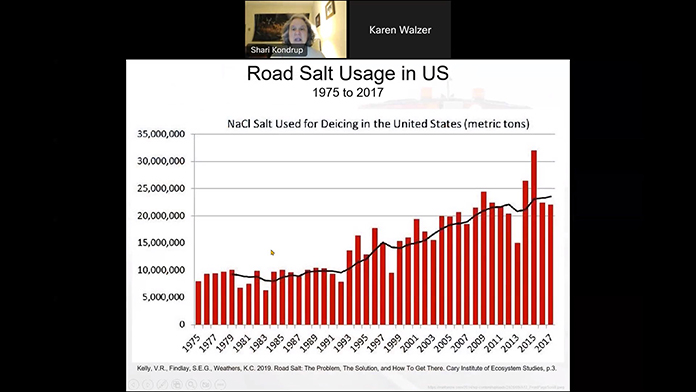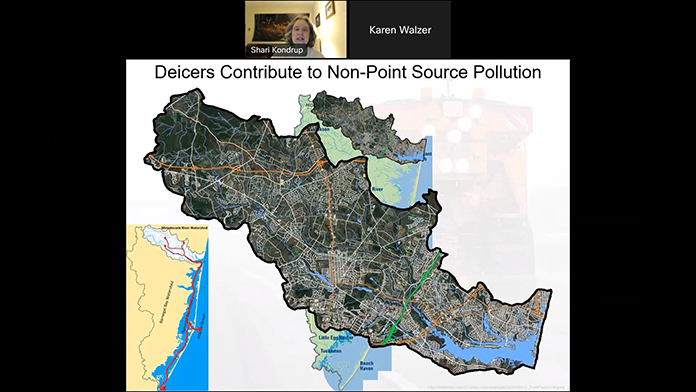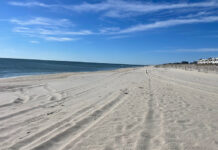
BRICK – The Brick Township Municipal Utilities Authority and the Barnegat Bay Partnership teamed up to educate residents on how deicers affect our environment and how to use them responsibly.
Many use road salt and another deicing products to keep our walkways and driveways safe. Although these products are helpful, they impact our environment and water supplies.
During the free community education program, Shari Kondrup from Brick Utilities explained how these products impact our water resources as well as described ways to minimize these impacts.
During the early 20th century, ice was manually shoveled off roadways. Today, it’s removed mechanically and deicers are applied to roadways prior to winter storms. Deicers are also used on sideways to prevent accidents just like roadways.
“It’s estimated that in 2021, over 25 million metric ton of salt were used,” Kondrup said. “Even though deicers keep us safe, it damages infrastructure and continues to do so. It damages roadways, sidewalks, buildings, and even our cars.”

Additionally, animals are attracted to road salts which man contain mineral concentrations that can aid in antler development and pregnancy. However, it causes road hazards for vehicles as certain animals come out during twilight. Birds mistake the salt as seeds as well.
“It’s studied that drinking water for these animals have contained highering salt levels over the years. No matter how the salt is consumed, it still harms wildlife,” Kondrup said.
Kondrup also explained how deicers can harm waterways through non-point source pollution and point source pollution.
“Non-point source pollution comes from many different sources of pollution and cannot be traced back to an identifiable source. How does this get into our waterways? It can be blown in by the wind, thrown in by people, or rain/storm water that drains into the streams. Anything that is in the streets such as litter, oil, pet waste, and fertilizer creates pollution,” Kondrup said.
When it comes to salt brine or rock salt, the snow and ice melt with the salt and washes into the storm drains.
“The salt doesn’t go away, it lingers. After decades of use, scientific studies are showing higher salt concentration in our streams, during the summer time as well,” Kondrup said. “As the salt mixes with the river water, some of it will go down stream with the flow of the river. Since salt water is heavier than fresh water, it will sink down to the bottom into the sediments within the stream bed.”
Deicers can also affect our ground water. Non-point source pollution can contaminate an aquifer when it rains or snows and ice melts, she said. The salt will wash off into the surrounding soil. This will stay saturated in the soil and eventually percolate into the ground water.
“Salt washes off land surfaces into streams from snow and ice melting and/or from rain. Salt percolates into groundwater/unconfined aquifers from snow and ice melting and/or from rain,” Kondrup said. “The stream becomes salty from surface runoff and recharge from the aquifer. As fresh water now becomes more salty, fresh water aquatic vegetation will die off. Fresh water aquatic species will move to fresher water upstream. This allows invasive species to move in. A change in the soil can have the same effects.”
Over 80% of our water supply comes from the Metedeconk River Watershed, she said.
She further states that we can try to remove salt from water, however not all treatment processes can fully remove salt from our water.
What is Kondrup’s opinion on deicers? She believes that although we need deicers, we should be using them in a controlled way to manage usage.
“I’m not saying we shouldn’t be using deicers because we need them to keep our environment safe during inclement weather during the winter time. But we need to know how we can use them responsibly,” she said.

According to Kondrup, all deicers, whether they are labeled environmentally safe or not, will have some impact on our water sources and environment.
Sodium chloride is especially damaging to the environment. Kondrup said when using a deicer to read the labels and ingredients and choose one that will be effective for temperatures in your area.
Here are some additional tips she listed to use deicers responsibly:
- Do not salt while snowing or before. Either shovel periodically as it snows or wait until it stops. Clear the snow before it changes to ice.
- Try to shovel to a bare surface if possible. Then salt if necessary. Remember all deicers can’t melt ice past a certain temperature. If the one you are using won’t melt past the temperatures in your area and the pavement is still icy, use a different deicer or sand for traction.
- Don’t use too much salt. A 12 oz mug is enough to salt 10 sidewalk squares or a 20-foot driveway.
- When the pavement is dry, sweep up any excessive salt, store it in a bucket and use it for the next storm. Do not rise the salted areas with a hose. This may cause the areas to refreeze or to go down storm drains into our water supply.
- Evaluate and use salt where needed.
- Ask questions to snow removal services.
“Remember, once you put salt down it doesn’t go away. Salt alters the composition of soil, slows plant growth and weakens concrete, brick and stone that make up our homes, garages, bridges and roads. It travels into our lakes, rivers, streams and wetlands putting our aquatic life at risk and endangering our fresh water resources,” Kondrup said. “It only takes one teaspoon of salt to permanently pollute five gallons of water.”
To learn more about the Metedeconk River Watershed, visit metedeconkriver.org. To learn more about the Barnegat Bay Partnership, visit barnegatbaypartnership.org.






